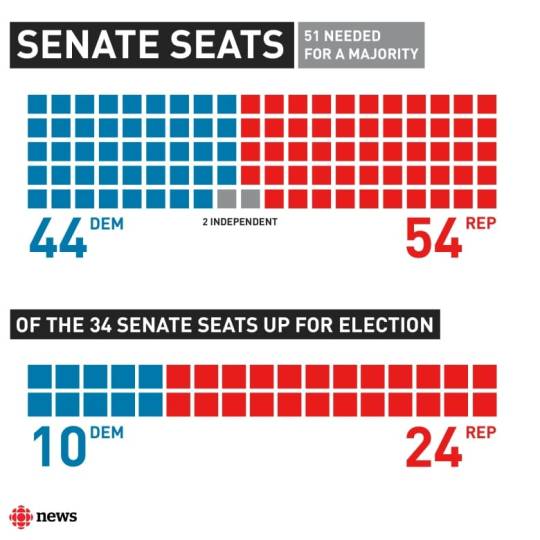#*will smith pose* she <333
Note
what would isabel wear to yule if she picked her own outfit? (uve mentioned before that her dress is picked for her so im curious to know what she would have worn if she could choose it for herself) :)
YEEEEEEEESSYESYES YES!!!! I’VE BEEN HOPING SOMEONE WOULD ASK THIS FOR AAAAGES!!! ANON YOURE THE BEST!!<333
Clears my throat. Will Smith pose. I present:
THE LENNI FOR FREE PEOPLE CHROMATIC SUIT IN RED 🌟✨




She would look SOOOOOOOO CUTE IN THIS!! Isabel would KILL the 'bi woman in a suit' look!!!!!!
It’s velvet so you KNOW it would be so soft. And the sequin stars are SO EXCITING and EXPRESSIVE and FUN, they're the perfect visual representation of her cheery energy and flashy tendencies. Plus they’re shiny, literally making her the star (hehe) of the room.
I think this would fit her personality PERFECTLY. It’s fun and dazzling and daring and slightly edgy - dressed down and super casual, but decadent. This, plus a fun crop top or bralette underneath like in pictures 2+3, and a pair of glossy pointed bright red boots would be THE look of the evening. I’d accessorize it with a high bun that has loose pieces in front to frame her face, and some thick gold jewelry to bring out the warm tones in her skin. This would be a great way to blend her cooler tomboyish style with her cuter feminine style that Zack uses more in promo illustrations.
Isabel isn’t usually blingy and is a very practical dresser. yule is the one night when she could indulge and really have fun with how she dresses, so i'm going all in on this hypothetical scenario
#asks#anon#wizard au#isabel would go so hard in the deep maroon red of pics 2+3.......#NOT those shoes though. eugh. the chunky heel? no. impractical and also way too gaudy.#i love the model they use for pice 1+3... u dont see much of her face hut she even *feels* a little like isabel#*pics lol oops#and the low rise.... NO thank you. high waisted trouser suit pants+ crop top+ suit jacket is the perfect combo. unmatched.#maybe shed have a stylish belt too to hold them up. i have one in my closet that would fit this look so well ugh. UGH
2 notes
·
View notes
Photo




— CASSIDY • RYDER
#mass effect#mass effect andromeda#mea#meaedit#ryder#*fae creations#*fae.gif#*mea#oc: cassidy ryder#*will smith pose* she <333#baby girl baby precious#little irish kid has an important job fell into her lap that she never really trained for and has to make do#really love this new hair mod i got for her finally she looks like i wanted her to look#elaineettariel#bllvkbird#highoverseer#waterdeep#userseb#usersteelport#irisviellavellan#teehee let me know if you dont want to be tagged <33#or if you DO want to be tagged that is ghgngn
314 notes
·
View notes
Text
How Many House Seats Did Republicans Win
New Post has been published on https://www.patriotsnet.com/how-many-house-seats-did-republicans-win/
How Many House Seats Did Republicans Win

Florida Vs California: How Two States Tackled Covid
2018 House Midterm Election Results Update – House Voting Results – How Many Seats? Blue Wave?
The researchers theorized that one reason for the change is that Democrats were in charge of states where people who had the virus first arrived in the country but Republicans were less stringent about safeguards, which could have contributed to their states ultimately higher incidence and death rates.
The early trends could be explained by high Covid-19 cases and deaths among Democratic-led states that are home to initial ports of entry for the virus in early 2020, the researchers wrote. However, the subsequent reversal in trends, particularly with respect to testing, may reflect policy differences that could have facilitated the spread of the virus.
The study, which which was published in the peer-reviewed American Journal of Preventive Medicine, examined Covid-19 incidence, death, testing, and test positivity rates from March 15 through December 15, 2020, when there were 16 million confirmed cases in the U.S. and 300,000 deaths. It focused on per-capita infection and death rates in the 26 GOP-led states and 24 Democratic-led states and Washington, D.C., and made statistical adjustments for issues such as population density.
But policy differences between the Republican and Democratic leaders emerged as a big factor for the reversal of the states fortunes, the study suggests.
One of the most concerning things last year is the politicization of public health restrictions, Lee said. Theyre not opinions, theyre based on evidence.
Opinionhow Can Democrats Fight The Gop Power Grab On Congressional Seats You Wont Like It
Facing mounting pressure from within the party, Senate Democrats finally hinted Tuesday that an emboldened Schumer may bring the For the People Act back for a second attempt at passage. But with no hope of GOP support for any voting or redistricting reforms and Republicans Senate numbers strong enough to require any vote to cross the 60-vote filibuster threshold, Schumers effort will almost certainly fail.
Senate Democrats are running out of time to protect Americas blue cities, and the cost of inaction could be a permanent Democratic minority in the House. Without resorting to nuclear filibuster reform tactics, Biden, Schumer and House Speaker Nancy Pelosi may be presiding over a devastating loss of Democrats most reliable electoral fortresses.
How Did The Gop Gain In The House While Trump Lost Its Actually Pretty Simple
One of the increasingly prevalent arguments spun by President Trump and his allies when it comes to supposed voter fraud in the 2020 election is this: Republicans had, by and large, a pretty good election below the presidential level. They gained significant ground in the House and probably held the Senate as long as they dont lose both Georgia runoffs. So how on earth did Trump lose?
The answer is actually pretty simple: Our elections increasingly look more like parliamentary ones, and given that, the results make a ton of sense.
New data from the election-reform group FairVote sheds some light on how the battle for the House played out. The big takeaway: Our politics are increasingly less about people and incumbents and more about party. Weve been talking about increased polarization for many years, but the 2020 election really drove it home. The results for Congress affirm the fact that Republicans writ large lost the election, even though it might have been closer than many expected.
FairVote has for years studied an issue called incumbency bump i.e., how much an incumbent benefits relative to other members of their party thanks to already being in office. The conventional wisdom on incumbency is that its a big advantage that people might not like a politicians party or Congress as a whole, but if they know that politician well or have any doubts, theyll revert to supporting the person in the seat.
Recommended Reading: Why Are Republicans Wearing Blue Ties
Oc Supervisor Michelle Steel Defeats Rep Harley Rouda Flipping Socal Congressional Seat Back To Gop
Still, Republicans are buoyed as they look to 2022, when Democratic Gov. Gavin Newsom is expected to seek another term. A U.S. Senate seat will be on the ballot along with other statewide offices, all held by Democrats.
Republicans see a target. Newsom is struggling with an economy battered by the virus, there is widespread discontent with the states shifting COVID restrictions and his credibility has been dented: He broke state rules when he and his wife were caught dining with 10 others at the toney French Laundry restaurant, sitting close together, mask-less. Newsom repeatedly has told Californians to stay home and wear masks.
We have a real opportunity, I think, to win statewide again, Patterson said.
Biden, despite his dominating win in the state, did not have coattails in key House races.
In the 25th District north of Los Angeles, Republican Rep. Mike Garcia held on for a 333-vote win over Democrat Christy Smith while running as a Trump apostle in a district with a 7.5-point Democratic registration edge. The son of a Mexican immigrant father, the former Navy combat pilot won the seat in a May special election after the resignation of former Democratic Rep. Katie Hill.
Young Kim defeated Democratic Rep. Gil Cisneros in a rematch in the Democratic-leaning 39th District, anchored in Orange County. A former state lawmaker, she was born in South Korea and grew up in Guam.
Who Controls State Legislatures In States With Changes


Thirteen states were affected by the 2020 Census’ shift in congressional seats.;
States are given the task of redrawing districts when;they gain;or lose;seats.;
Michael Li, senior counsel for the non-partisan Brennan Center for Justice’s Democracy Program,;said;the country could be poised for a battle over;gerrymandering, the practice of redrawing district lines to favor one party over the other or to suppress the vote of communities of color.
In some states, the process is fairer than others, he said, because they are not controlled by just one political party or they have instituted an independent redistricting committee, such as in Michigan. But for other states, the party in power stands to control the map.
Read Also: Republicans Are Stupid Donald Trump Quote
How Republicans Pulled Off A Big Upset And Nearly Took Back The House
Analysis by Harry Enten, CNN
There seemed to be one safe bet when it came to the 2020 election results: Democrats would easily hold on to their majority in the House of Representatives. Not only that, but the conventional wisdom held that Democrats would pick up more than the 235 seats they won in the 2018 midterm elections.
Why Did House Democrats Underperform Compared To Joe Biden
Reddit
The results of the 2020 elections pose several puzzles, one of which is the gap between Joe Bidens handsome victory in the presidential race and the Democrats disappointing performance in the House of Representatives. Biden enjoyed an edge of 7.1 million votes over President Trump, while the Democrats suffered a loss of 13 seats in the House, reducing their margin from 36 to just 10.
Turnout in the 2018 mid-term election reached its highest level in more than a century. Democrats were fervently opposed to the Trump administration and turned out in droves. Compared to its performance in 2016, the partys total House vote fell by only 2%. Without Donald Trump at the head of the ticket, Republican voters were much less enthusiastic, and the total House vote for Republican candidates fell by nearly 20% from 2016. Democratic candidates received almost 10 million more votes than Republican candidates, a margin of 8.6%, the highest ever for a party that was previously in the minority. It was, in short, a spectacular year for House Democrats.
To understand the difference this Democratic disadvantage can make, compare the 2020 presidential and House results in five critical swing states.
Table 1: Presidential versus House results
Arizona
Read Also: Republican Senate Seats
Election Analysis And Context
All 435 seatsincluding seven vacancieswere up for election, with Democrats needing to add 23 seats to win majority control of the chamber.
The Democratic Party was well-positioned to gain seats, according to a 100-year historical analysis of House elections conducted by Ballotpedia and political scientist Jacob Smith. From 1918 to 2016, the presidents party lost an average of 29 seats in midterm elections. The Democrats matched this pattern in the 2018 midterms, gaining 40 seats for a total of 235 seats17 more than was needed for a majority.
One undecided 2018 race was decided in September 2019 when Dan Bishop won the special election. The state board of elections called a new election following allegations of absentee ballot fraud in the 2018 race. for more information on the aftermath of the 2018 election.
In 372 of the 435 seats, an incumbent was seeking re-election on November 6. There were 52 seats where the incumbent was either retiring or otherwise not seeking re-election18 Democrats and 34 Republicans, including House Speaker Paul Ryan and seven vacant seats. In four other seats, the incumbenttwo from each partywas defeated in a primary before election day.
There were 46 seats that changed party hands, both open seats and those occupied by an incumbent, and 30 of the 372 incumbent U.S. representatives lost their seats in the general electionall Republicans.
Gubernatorial And Legislative Party Control Of State Government
Midterm elections: Do Republicans have a chance of keeping the House?
Top 10 Closest Primaries: January to June 2020
Wave elections
Gubernatorial and legislative party control of state government refers to the role of political parties in the power dynamic between state legislatures and executives. Below, we examine the partisan affiliation of the 1,972 state senators, 5,411 state representatives, and 50 state governors across the United States.
Partisan breakdown of state governments
Below, Ballotpedia presents our information on the partisan breakdown of state senators, state representatives, and governors as well as the state legislature and state executive branch as a whole. We also examine state government trifectas, which occur when the state house, the state senate, and the office of the governor are each controlled by one political party. Trifectas are important to highlight since unified partisan affiliation between the branches of state government can impact a states legislative process.
The following maps display current state government trifectas as well as historical trifectas leading up to the 2010, 2012, 2014, 2016, 2018, and 2020 elections. Use the buttons below to select a map.
Read Also: When Did Republicans And Democrats Switch Platforms
Eric Holder: There Is Still A Fight For Democrats Against Gop Gerrymandering
In McConnells Kentucky, for instance, Republicans are divided over how far to go during the upcoming redistricting process, which they control in the deep-red state. The more extreme wing wants to crack the Democratic stronghold of Louisville, currently represented by Rep. John Yarmuth. More cautious Republicans like McConnell are willing to settle for smaller changes that reduce Democratic margins while stuffing more Republican voters into hotly contested swing districts.
Make no mistake: McConnells caution isnt rooted in any newfound respect for the integrity of our electoral process. Instead, Republicans are mainly worried about avoiding the costly and embarrassing court decisions that invalidated their most extreme overreaches and potentially turn the line-drawing over to the courts. So McConnells approach doesnt reject partisan gerrymandering it just avoids the type of high-profile city-cracking that could land the Kentucky GOP in federal court.
States With Republican Governors Had Highest Covid Incidence And Death Rates Study Finds
States with Democratic governors had the highest incidence and death rates from Covid-19 in the first months of the coronavirus pandemic, but states with Republican governors surpassed those rates as the crisis dragged on, a study released Tuesday found.
From March to early June, Republican-led states had lower Covid-19 incidence rates compared with Democratic-led states. On June 3, the association reversed, and Republican-led states had higher incidence,the study by researchers at the Johns Hopkins Bloomberg School of Public Health and the Medical University of South Carolina showed.
For death rates, Republican-led states had lower rates early in the pandemic, but higher rates from July 4 through mid-December, the study found.
You May Like: Trump Used To Be Democrat
The House’s Balance Of Power Is Tipped Toward Democrats
The Democrats;have a narrow six-member margin in the current House of Representatives, meaning if just a handful of seats flip, Republicans can regain control of the House.
Democrats’;advantage;will grow to seven when Troy Carter is sworn in;to fill a seat in Louisiana’s delegation left vacant;by Cedric Richmond, who left the House to join the Biden administration as the director of the White House Office of Public Engagement.;
United States House Of Representatives Elections 2018


17Footnotes
The Democratic Party won control of the U.S. House from the Republican Party on . Democrats gained a net total of 40 seats, 17 more than the 23 seats they needed to win control of the House.
Heading into the elections, Republicans had a 235-193 majority with seven vacancies. All 435 seats were up for election. Special elections were held earlier in 2018 and in 2017 to fill vacancies that occurred in the 115th Congress. Democrats flipped one seat when Conor Lamb won a to replace Tim Murphy in Pennsylvania’s 18th Congressional District.
Ballotpedia covered every state and federal primary in 2018 to highlight the intraparty conflicts that shaped the parties and the general elections. Click here for our coverage of Republican Party primaries in 2018, and here for our coverage of Democratic Party primaries.
Also Check: Republican Vs Democrat Indictments
Isan Composition Of State Legislatures
Alabama Alaska Arizona Arkansas California Colorado Connecticut Delaware Florida Georgia Hawaii Idaho Illinois Indiana Iowa Kansas Kentucky Louisiana Maine Massachusetts Michigan Minnesota Mississippi Missouri Montana Nebraska Nevada New Hampshire New Jersey New Mexico New York North Carolina North Dakota Ohio Oklahoma Oregon Pennsylvania Rhode Island South Carolina South Dakota Tennessee Texas Utah Vermont Virginia Washington West Virginia Wisconsin Wyoming See also
The partisan composition of state legislatures refers to which political party holds the majority of seats in the State Senate and State House. Altogether, there are 1,972 state senators and 5,411 state representatives.The breakdown of chamber control after the November 2020 election is as follows:
37 chambers
One chamber with power sharing between the parties
The breakdown of chamber control prior to the November 2020 election was as follows:
39 chambers
See also: Partisan composition of state houses and Partisan composition of state senates
state government trifecta
As of August 15, 2021, there are 23 Republican trifectas, 15 Democratic trifectas, and 12 divided governments where neither party holds trifecta control.
Districts That Flipped In 2018
The map below highlights congressional districts that changed party control in the general elections on November 6, 2018.
The following table lists congressional districts that changed party control in the general elections on November 6, 2018. It also includes 2020 general election race ratings from three outlets.
Flipped congressional districts, 2018 Kim Schrier
Recommended Reading: Trump 1998 People Magazine Quote
Republicans Introduce 253 Bills To Restrict Voting Rights In States Across The Us
whatsapp icon
Republican lawmakers in 43 states have introduced a total of 253 bills aimed at restricting access to the ballot box for tens of millions of people. Republican-controlled states, including Southern states that employed lynch law terror to block African Americans from voting during the decades-long period of Jim Crow segregation, are flooding their legislatures with measures to effectively disenfranchise working class, poor and minority voters.
The laws largely focus on tightening voter ID requirements, purging voter rolls and restricting absentee and mail-in ballots.
In the United States, state governments have the authority to oversee elections and determine election procedures and rules, including for national elections. Within each state, individual counties have a great deal of latitude in the conduct of elections.
Republicans control both the lower and upper legislative houses in 36 of the 50 states, and both the legislatures and governorships in 23 states, making it very possible for far-reaching barriers to the ballot box to be imposed across much of the country.
Despite opening the door for a return to restrictive and discriminatory voting practices, the 2013 ruling met with little resistance on the part of the Democratic Party. Neither the Obama White House nor the congressional Democrats mounted any serious effort to reverse the evisceration of the Voting Rights Act by enacting new legislation in the years since the reactionary Shelby ruling.
Texas
Gop Women Made Big Gains
Democrats win House, Republicans keep Senate in US
While the majority of the Republican caucus will still be men come 2021, there will be far more Republican women in Congress than there were this year. So far, it looks like at least 26 GOP women will be in the House next year, surpassing the record of 25 from the 109th Congress. Thats thanks in part to the record number of non-incumbent Republican women 15 whove won House contests. And its also because of how well Republican women did in tight races. The table below shows the Republican women who ran in Democratic-held House districts that were at least potentially competitive,1 according to FiveThirtyEights forecast. As of this writing, seven of them have won.
GOP women have flipped several Democratic seats
Republican women running for potentially competitive Democratic-held House seats and the status of their race as of 4:30 p.m Eastern on Nov. 11
District D+22.1
Results are unofficial. Races are counted as projected only if the projection comes from ABC News. Excludes races in which the Republican candidate has either a less than 1 in 100 chance or greater than 99 in 100 chance of winning.
Also Check: Who Is Right Republicans Or Democrats
0 notes
Link
A California court halted Orange County’s only needle exchange program this week — a decision that illustrates the challenges these programs face despite significant evidence for their benefits.
In issuing a preliminary injunction, state Judge Joel Wohlfeil stopped the Orange County Needle Exchange Program (OCNEP) from operating.
The program planned to operate mobile needle exchanges in four cities across the county, with state approval, after the city of Santa Ana decided to shut down the exchange’s permanent location after nearly two years. But Orange County’s government, as well as the cities of Anaheim, Costa Mesa, and Orange (where the program would operate, along with Santa Ana), objected to the mobile exchanges, and filed a lawsuit earlier this year.
Orange County’s argument, like Santa Ana’s, focused on a trope often used against syringe exchanges: the threat of needle litter — the idea that exchanges let people obtain a lot of syringes that are then improperly disposed in public places, exposing the public to the risk of getting inadvertently stuck by a needle.
The court agreed that the needle litter problem in fact preceded the syringe exchange, but it indicated that the needle exchange had exacerbated the problem. That was a big reason for the court’s preliminary injunction.
The county and court’s moves highlight a persistent problem with needle exchanges: Even though they have been researched for decades, and studies have repeatedly supported the benefits of needle exchanges, the programs are often mired by public and particularly local resistance — frequently fueled by stigma and misconceptions about addiction. That’s led to the closing of several needle exchanges, from West Virginia to Indiana to California, even as America is engulfed in its deadliest drug overdose crisis in history in the opioid epidemic.
In a statement, OCNEP condemned the county’s actions and the court’s decision, arguing it will put lives at risk:
[B]y standing in the way of OCNEP providing needed services throughout Orange County, the county is choosing to ignore the lives and health of people who suffer from opioid addiction, are experiencing homelessness, or are otherwise underserved. During this unprecedented opioid epidemic, counties across the country are collaborating with their local syringe exchanges to combat the problem. Rather than following their lead, Orange County officials have chosen to shut their only syringe exchange down.
The county, for its part, has stood by its complaints about needle litter and the threats it poses. Orange County Supervisor Andrew Do told the Orange County Register, “Because people did not choose to take those risks when walking down the street in the morning or opening a book in the public library.”
For now, the county has landed a big legal victory.
There is a ton of research showing that needle exchanges work to combat the spread of infectious diseases like hepatitis C and HIV, cut down on the number of needles thrown out in public spaces, and connect more people to treatment — all without enabling more drug use. This is an exhaustive body of research, backed by independent academic researchers, the World Health Organization, and the Centers for Disease Control and Prevention.
Beyond the direct benefits, advocates of needle exchanges argue that the programs can also give a much-needed sense of hope to underserved populations.
Alex Smith, a California resident, previously told me this reflected her own experience with a needle exchange in Ventura County. In 2012, Smith had a bad bacterial infection, MRSA, from reusing needles, with sores covering her face and body. She decided that she could no longer use the syringes she had been using and needed to get a clean supply. So she went to her local CVS.
“They took one look at me at CVS, and they turned me away. I felt so humiliated, disgusted. I didn’t know what to do,” Smith said. “I heard there was a mobile needle exchange in town. So I went to that. … I walked up, and there was a girl there. The first thing she did was smile at me and ask me how I was. I don’t know why that had such an impact on me. But it was the first time someone had treated me with dignity and humanity in a very, very long time.”
Smith went into treatment within weeks, and she said she hasn’t used drugs since then, recently hitting five years of recovery. She now works at a company that helps care for people with intellectual disabilities. She also recently graduated from college, and is now going to graduate school — a step, she hopes, toward helping run the company she now works for. “I wouldn’t have been able to do any of that unless I got sober,” Smith said.
She added, “It’s so much more than just needles. Being treated with dignity and humanity, the power of that is insurmountable. It can shed so much light in the darkest of somebody’s times.”
Needle exchanges aren’t the only solution to the opioid epidemic and related public health problems. But experts argue that needle exchanges are part of a broader suite of solutions, which also includes cutting back excess opioid painkiller prescriptions, expanding access to addiction treatment, and undertaking other harm reduction approaches, such as greater distribution of the opioid overdose antidote naloxone.
Despite the evidence, needle exchanges have long faced public resistance.
As a result, the US still lags far behind other developed countries when it comes to needle exchanges. Josh Katz reported at the New York Times: “According to the North American Syringe Exchange Network, 333 such programs operate across the country, up from 204 in 2013. In Australia, a country with less than a tenth as many people, there are more than 3,000.”
Some of the resistance is rooted in stigma around drug addiction. After decades of the US treating addiction as a criminal justice problem instead of a public health concern, much of the public and many policymakers still view addiction as an issue that demands a punitive response, and see those with addiction as part of the problem instead of people who need help. (A common response to just about any opioid story I write, for instance, is that people dying from drug overdoses are just part of “Darwin’s theory in action.”)
There are also more practical concerns, like the needle litter issue raised by Orange County officials.
When Santa Ana decided to shut down OCNEP’s operations in the local Civic Center, it pointed to photo evidence of needles found in the area surrounding the exchange, from needles found in books in the public library to syringes found in the streets. City officials didn’t provide data to back it up, but they told me that OCNEP made needle litter worse, and that the litter problem had gotten better after the program was shut down.
When OCNEP said it would shift to mobile exchanges in the aftermath, officials in Orange County and the four cities where the program would operate objected — arguing that the needle litter problems would explode all across the county.
OCNEP noted that needle litter preceded its existence — a point that Judge Wohlfeil, at least, agreed with. They also argued that they have taken steps, including limiting how many syringes people can obtain and conducting clean-up sweeps, to try to minimize needle litter.
In fact, OCNEP claimed that local government officials’ opposition to the program made it difficult to do more to clean-up work, arguing in a statement that its steps “would have been much more effective if we had a collaborative public health partner in the county.”
In Santa Ana, for example, OCNEP operated at the Civic Center just two hours a week, on Saturday from 1 to 3 pm local time. This meant that clients could go to the program to get a bunch of syringes for the coming week — and they wouldn’t be required to trade a needle for each one they get, since studies indicate that’s less effective for preventing the spread of infectious diseases. But clients didn’t have the exchange to dispose of their needles for the rest of the week, forcing them to find other means for disposal most of the time.
If OCNEP got more public support, and could therefore operate for a more standard five or seven days a week, there might not be as much litter. As Ricky Bluthenthal, a professor of preventive medicine at the University of Southern California, told me, “In an ideal world, you would have a syringe exchange program open for 40 hours a week.”
There’s evidence that needle exchanges may even reduce needle litter if they’re readily available. A 2012 study published in Drug and Alcohol Dependence compared a city with needle exchanges, San Francisco, to one without exchanges, Miami. Through visual inspections, they found 44 syringes per 1,000 census blocks in San Francisco, compared to 371 syringes per 1,000 census blocks in Miami.
Based on a survey of people who inject drugs, the researchers also concluded that those in Miami had more than 34 times the adjusted odds to improperly dispose of syringes in public than those in San Francisco.
Orange County officials, however, have so far resisted officially supporting any kind of needle exchange program. And, this week, they got the county’s only exchange shut down.
Original Source -> Needle exchanges help combat the opioid crisis. But officials keep shutting them down.
via The Conservative Brief
0 notes